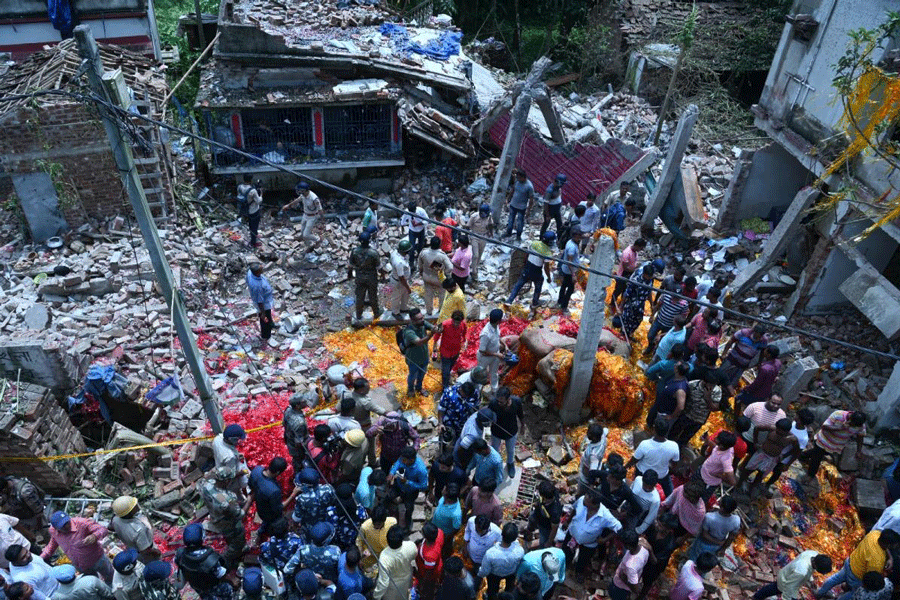As is often the case, the administration is trying to shut the proverbial stable door after the horse has bolted. Heads have begun to roll, but only after nine lives were lost in a blast in a firecracker factory in Duttapukur in Bengal’s North 24 Parganas district. Nearly 20,000 firecracker factories have been shut across the state; two policemen have also been suspended for their failure to take stern action against illegal manufacturing units. A vigilant administration could have averted the mishap; its inertia is all the more shocking because Bengal is no stranger to the loss of lives in mushrooming firecracker units. Several blasts have been reported in recent years, with North and South 24 Parganas and Midnapore serving as the epicentres; 12 persons had died in a similar incident in East Midnapore’s Egra as recently as May. The current administrative crackdown must not limit itself to investigating the incident in Duttapukur. It must cast its net wider to tackle the menace of illegal production hubs. There are attendant queries that must be answered. Do the patrons of this nefarious trade enjoy political heft? Are there loopholes in the law that need to be tightened to nip the evil in the bud? It is possible that administrative energy, a scant resource as it is, will not be enough to root out the problem. So the decision by the state-level organisation of firecracker traders to depute volunteers to keep an eye on illegal factories should be welcomed.
The urgency of the traders is understandable. The business of firecrackers in Bengal yields voluminous returns. By some estimates, a sum of Rs 60,000 crore is generated in a fiscal year and the industry employs at least 31 lakh workers. Untoward accidents involving illegal units and the resultant punitive action can adversely affect livelihoods. This reveals another, equally relevant, aspect. The firecracker trade and its attendant grey areas need to be seen in the context of Bengal’s economic woes. The lack of industry and new investment — an old, debilitating ailment — and diminishing returns from agriculture are forcing workers and employers into such risky entrepreneurship, often bending laws in the process. The lingering effects of the pandemic on the economy as well as the Centre’s refusal to settle Bengal’s dues under the Mahatma Gandhi National Rural Employment Guarantee Act have added to their duress. These realities must be kept in mind while addressing the issue.

